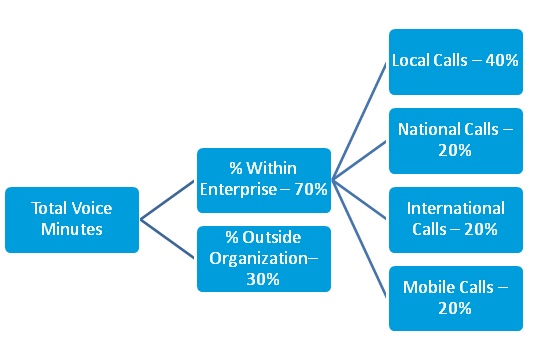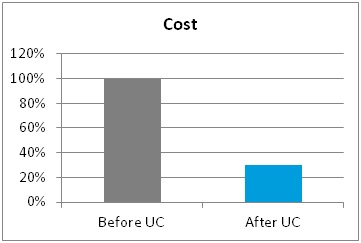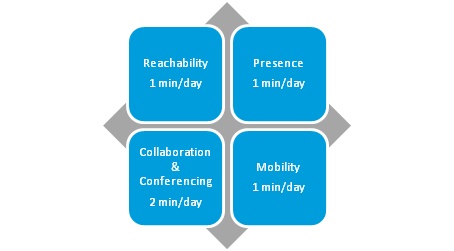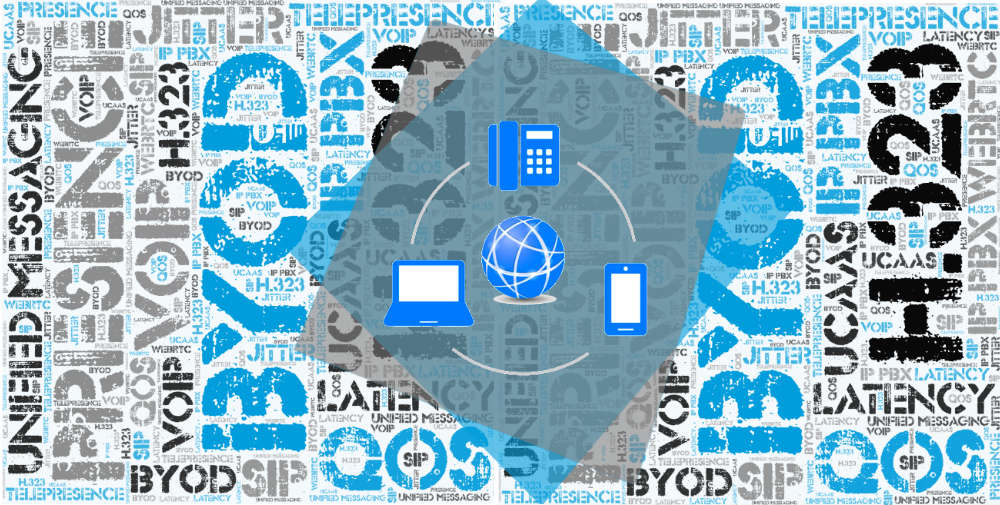How to calculate ROI for Unified Communications
Unified communications and collaboration (UCC) tools provide a great way to collaborate within and outside the organization. It not only saves time and money but also increases productivity of employees. Organization receives benefits directly from saving costs (by switching to VOIP calls) to increase in productivity by providing UC enhanced features (presence, mobility, collaboration etc).
Imagine a scenario, where you need to immediately contact your colleague and there is no reliable way of knowing whether he/she is available or not at the desk phone, eventually you end up contacting him/her after 5 calls (in about half an hour) due to his/her busy schedule. Imagine another scenario where a potential/existing customer is trying to contact you on your office desk but you are outside office. Investing in UC can remove these time consuming inevitable obstacles which are bound to happen in daily official communication. By using "Single Number Reachability", calls can be easily forwarded from desk phone to mobile, ensuring that people can reach you whether you're at your desk or out of the office. "Presence" feature assures that anyone can check availability within the organization (on the desk) of all the connected employees.
Free Download: Learn how to make your business communications effective and borderless with our UCC solutions.
Calculation In Action
Hard ROI
Hard ROI a.k.a direct benefits are directly tied to the impact of implementing the proposed solution. The direct benefits are often easy to quantify, and as such there is usually little risk in considering 100% of the expected cost avoidance or productivity improvements in the ROI calculation. We can easily calculate hard ROI of Unified Communications by investigating how many calls are made inside the enterprise (Local, National, International and Mobile) to external calls.
Let’s take an example

Take a typical scenario of a company with 300 employees spread over multiple geographical locations (both national & international). Now taking into account that average calls made internally (inside the enterprise) for support , updates, feedback, follow-ups etc is around 70%(with a split of Local, National, International and Mobile as given in below chart), there will be a cost reduction of 70% after UC implementation. This is due to the fact that all of the calls to enterprise are VOIP based, no call charges will apply.
Soft ROI
Soft benefits also referred as indirect benefits, are less easy to quantify and rely on business to business case. Various factors can be considered which actually causes reduction in expenses and increase in benefits. In Unified Communications we can quantify Soft ROI by considering following factors:
• Reachability: Time saved due to reachability to any device and any time to employees.
• Presence: Time saved due to known real-time availability of the employee.
• Collaboration/Conferencing: Time saved due to collaboration features (ability to collaborate from different locations)
• Mobility: Time saved due to work from anywhere feature. Clients can be served globally and employees can be contacted anywhere.
Let’s take an example
Again take the same case of 300 employees company.
If we take conservative estimate of 5 minutes of savings (per employee, per day - split shown above) then:
Time savings: 7500(5*300*5) min/week or 550(5*300*22/60) hr/month
Average Salary of Employee: Rs 40K per month
Hourly cost of employee: 40,000/(22*8) = Rs 227
Cost Savings per month: (550*227)= Rs 1,25,000
If you also want your organization to upgrade to a more effective communication platform (the one you can rely your complete business on) you can schedule an appointment with one of our UCC specialist. Through an in-depth consultation and auditing, we will provide you with detailed analysis(complete costing & ROI) and an optimal solution built specifically for your organization.








